A Definitive Guide to Watercolour Mediums
Watercolour Mediums allow you full creative control over watercolour painting. Including a selection of fluids and gels, you can use these products to modify your watercolour paints to add texture, slow drying, aid blending, alter flow, easily lift colour and more. Discover our range of Watercolour Mediums below and find out how they can add a new dimension to your watercolour paintings.
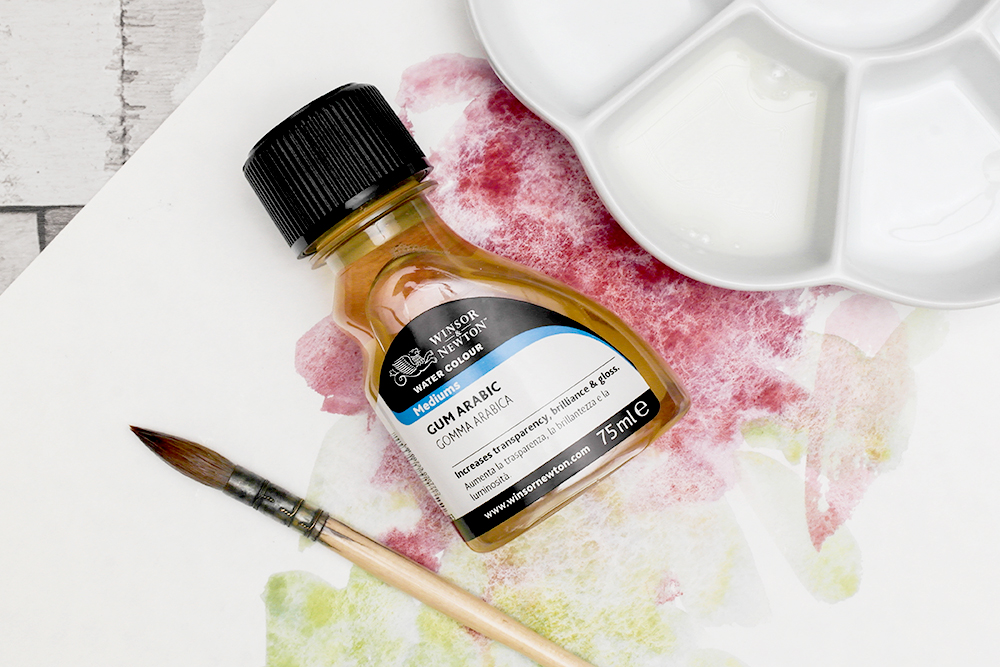
Many artists love Watercolour Painting because of its simplicity. All you need are some watercolour paints, paper, brushes and water and you’re ready to go. Even the clean-up is simple, requiring a little warm, soapy water at most.
Watercolour Mediums are the perfect product for artists looking to take their watercolour painting to the next level. Take a look at the amount of watercolour mediums on offer and you’ll notice there are relatively few compared to Acrylics, and even oils. Although they are few in number, these mediums can dramatically change the way your paint behaves. Read on and discover how watercolour mediums can open up a fresh range of creative possibilities.
Aquapasto
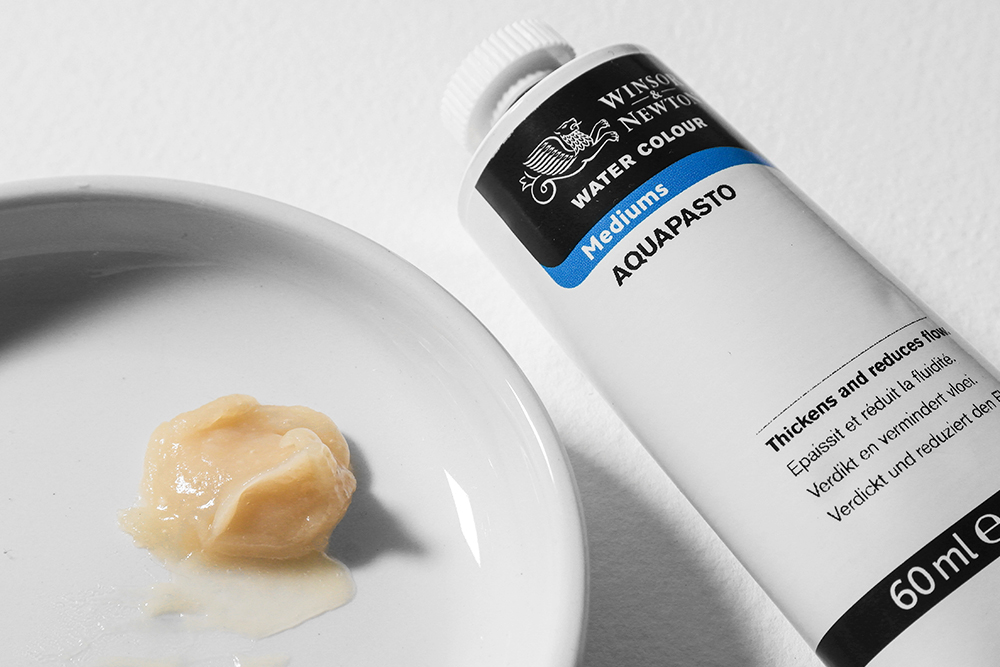
Aquapasto is a thick gel-like paste made from thickened Gum Arabic. Mix it in with paint to add body without affecting the opacity of the colour. Thick applications of watercolour paint alone tend to be quite brittle, so mixing with Aquapasto is a great way to add body without brittleness. Straight from the tube this medium has a yellowish-hue, which can sometimes add a tint to pale or transparent colours. Be sure to test it with your colours prior to painting to make sure you’re happy with the effect!
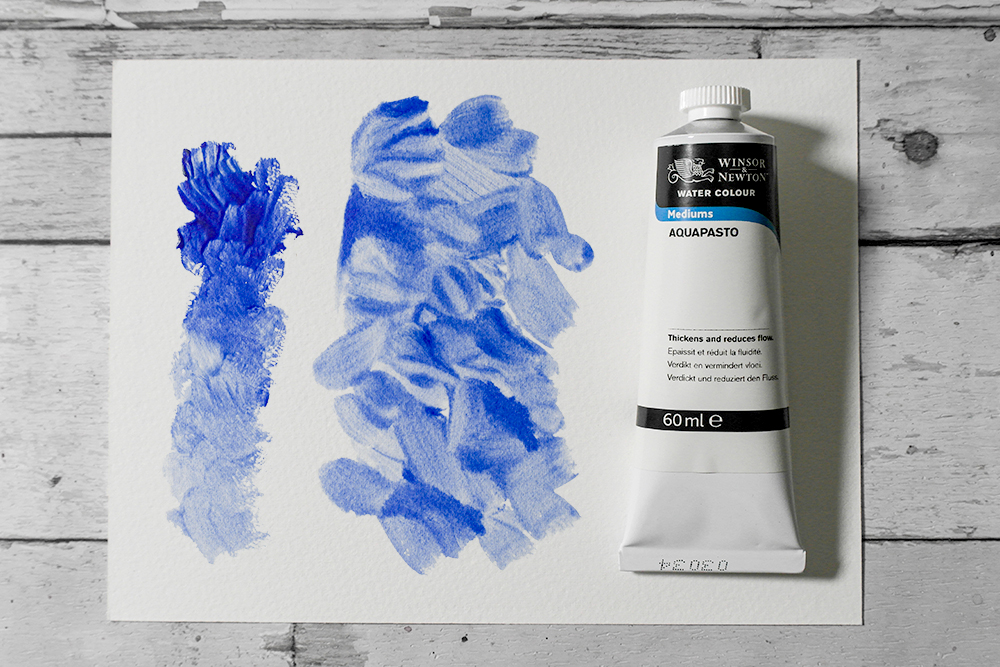
You can also use Aquapasto prior to painting to enhance texture. Dilute the gel slightly and paint a thin glaze over damp paper. As you add colour to your painting you’ll notice that the brush strokes retain a little more structure than they would if you painted directly onto dry paper. Try scraping into layers of your paint/Aquapasto mixes to create even more texture. Do this with the end of a brush or with a palette knife. It can reveal colours from washes below and is a great way to add textural interest.
Blending Medium
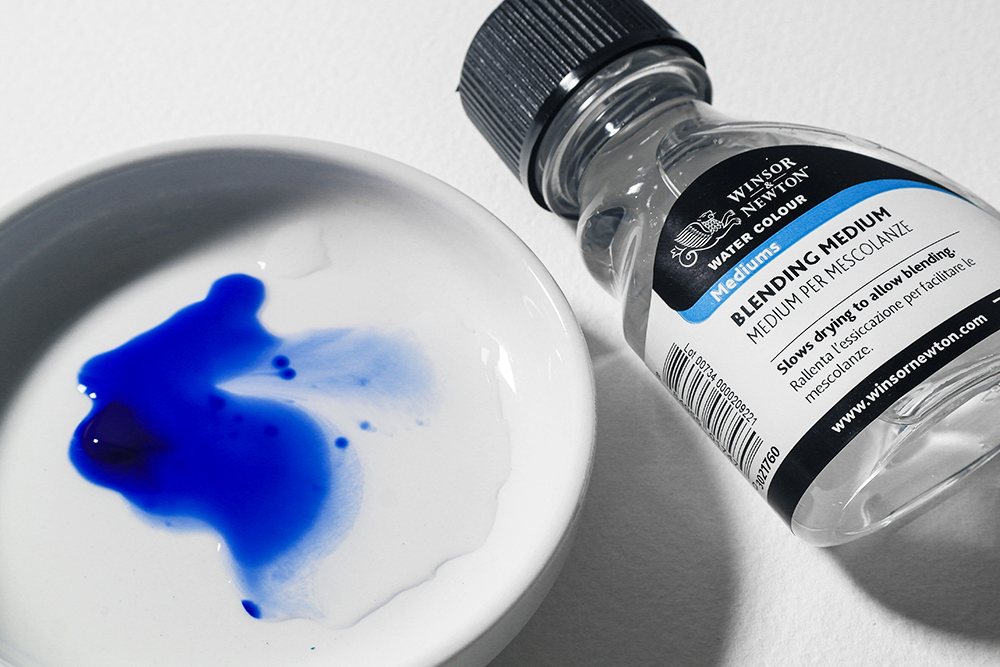
Blending Medium slows the drying time of watercolour paint to give you more time to blend your colours. A longer open time will make it easier to achieve smooth gradients of colour, and allows more opportunity for reworking. Mixing pure Blending Medium with your paints will give you the longest drying period. You can also dilute this medium with water, and then mix with your paints to give different drying durations. Alternatively, you can treat an entire sheet of paper with this medium prior to painting. You may find that this causes the paint to bead slightly on first application, but this effect should dissipate as you paint.
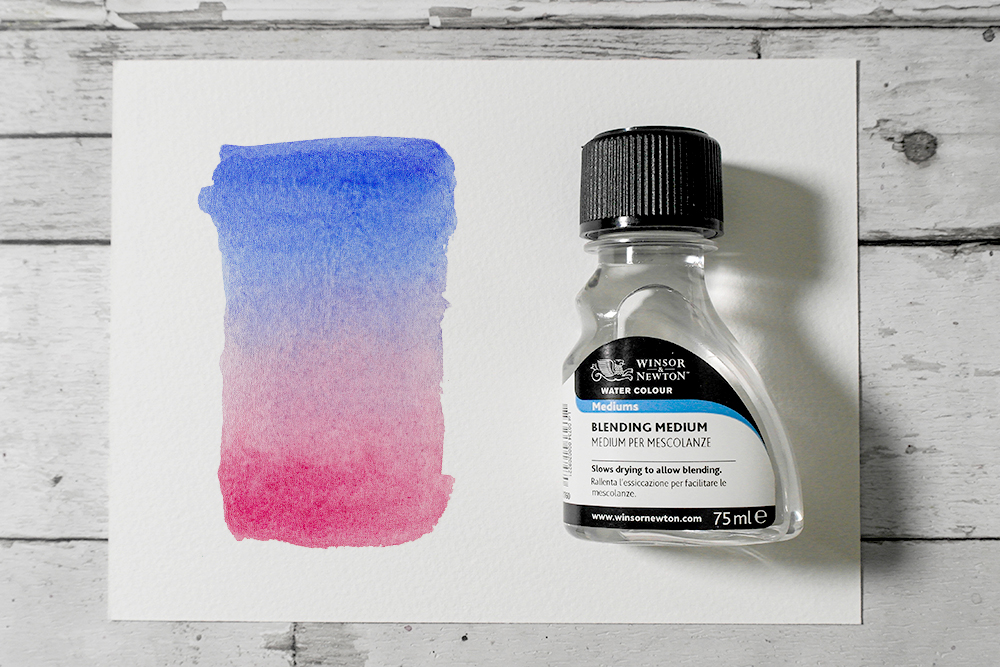
Ultimately, the drying time of your watercolour will be affected by environmental factors like humidity, air flow and temperature – so you might have to experiment a little with the amount of medium you use to get just the right drying time. Your choice of paper can also change drying rates. Try using a hard sized, less absorbent paper (like Millford) to extend drying time further.
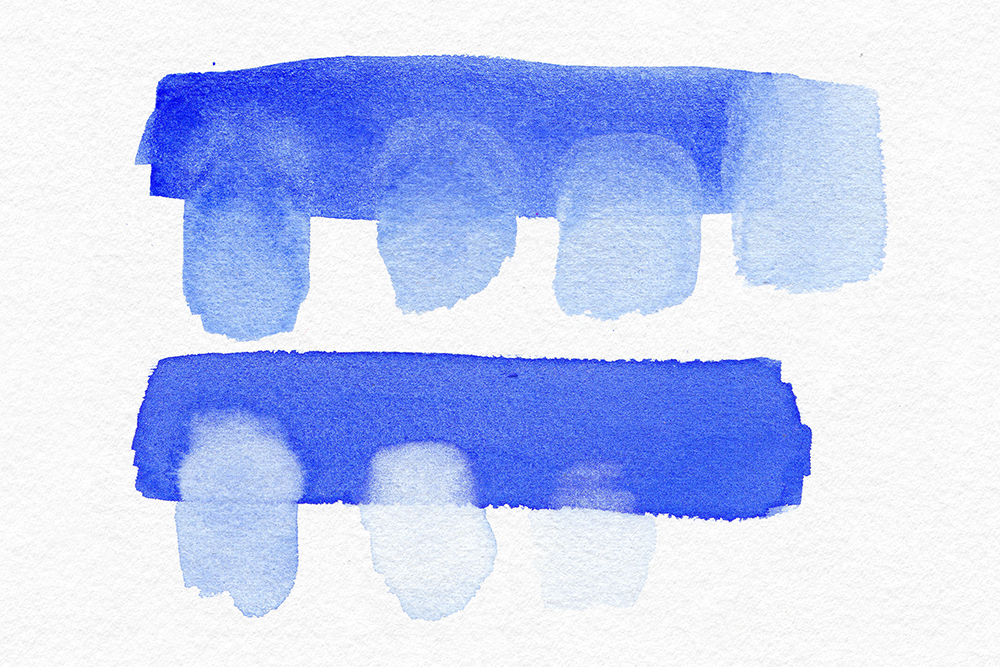
Granulation Medium
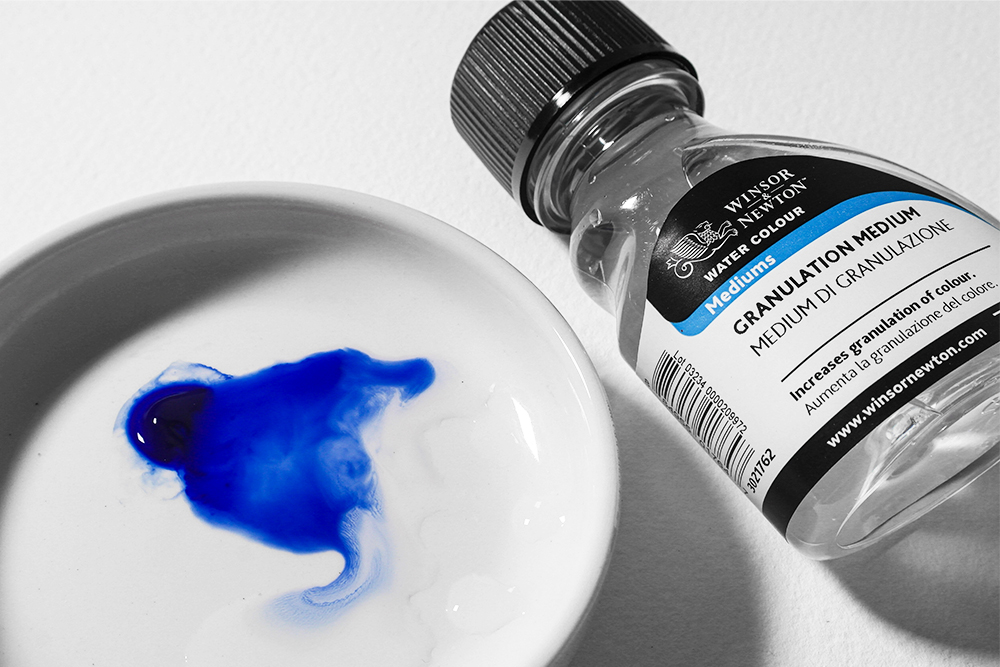
Granulation Medium can create a granulated effect in colours that would otherwise produce a flat wash. You can also add it to naturally granulating colours to further enhance the effect. It’s a great medium for creating texture, especially in landscapes and seascapes. Granulation can be split into two different types; sedimentation and flocculation. Sedimentation occurs when grains of pigment settle into the pits and troughs of your paper. Flocculation attracts grains of pigment together so they form larger clumps. While this occurs naturally in some pigments, Granulation Medium mimics or enhances the effect. For the strongest effects dilute your colours using Granulation Medium alone. Diluting colours with a mixture of medium and water will create a less pronounced effect.
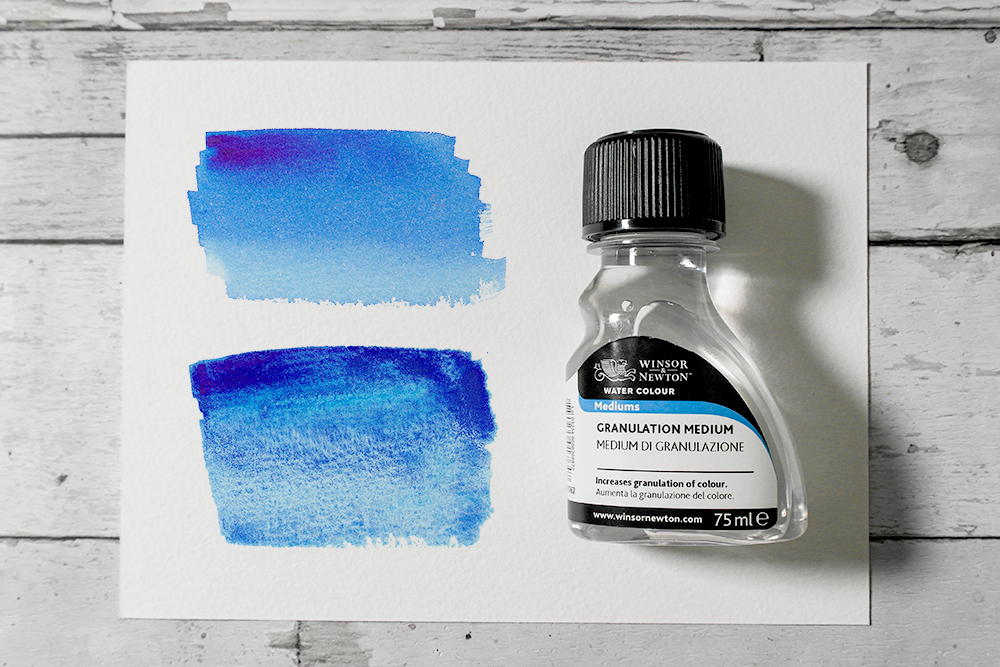
The type of paper you use will also change the strength of the granulation effect. The effect is most pronounced on NOT and Rough texture watercolour papers, but it can be seen in a lesser strength on Hot Pressed paper. Typically a higher amount of fluid in your washes will create stronger granulation.
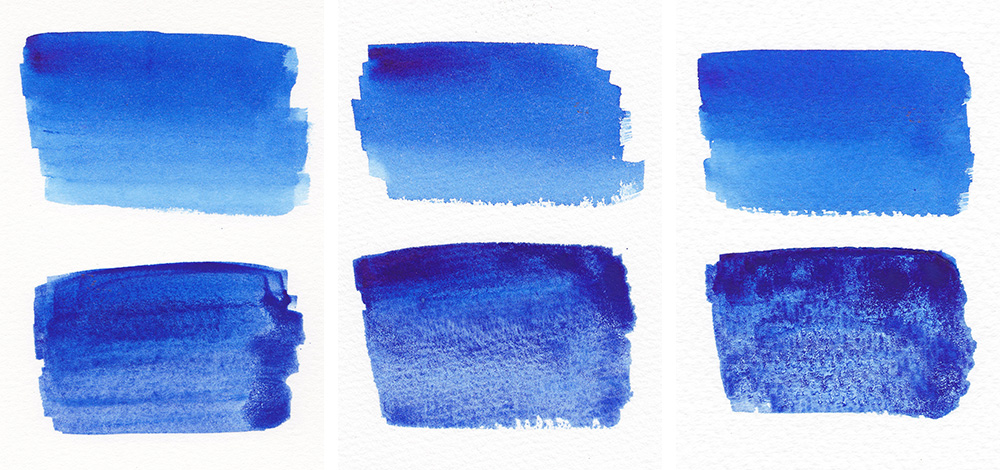
Gum Arabic
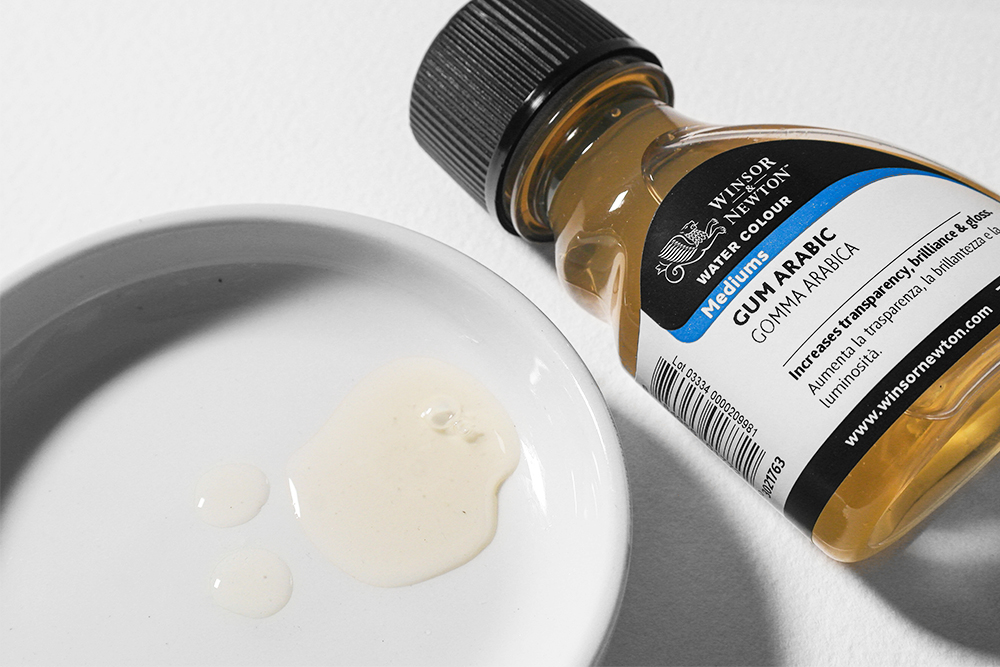
Gum Arabic is the binder in watercolour paint, but fluid Gum Arabic is also useful as a painting medium. Straight from the bottle it’s a pale yellow fluid with a viscous consistency. Mix it with watercolours to control the spread of wet colour, reduce staining as well as increasing gloss and transparency. It also slows down the drying process, although not as much as Blending Medium would. You can also use Gum Arabic as a masking medium. You apply it in the same way you would a regular masking fluid, but instead of peeling to remove you gently lift it with a wet brush or damp sponge. This masking method creates smooth, feathered edges – rather than the crisp, clean edges of masking fluid – and is not recommended for use with staining colours.
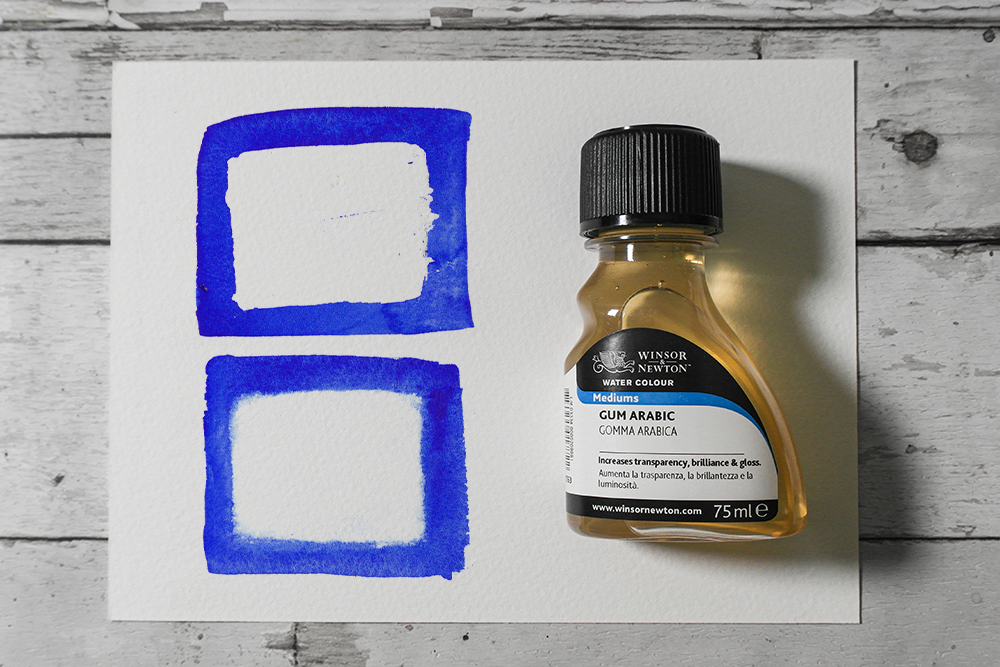
Iridescent Medium
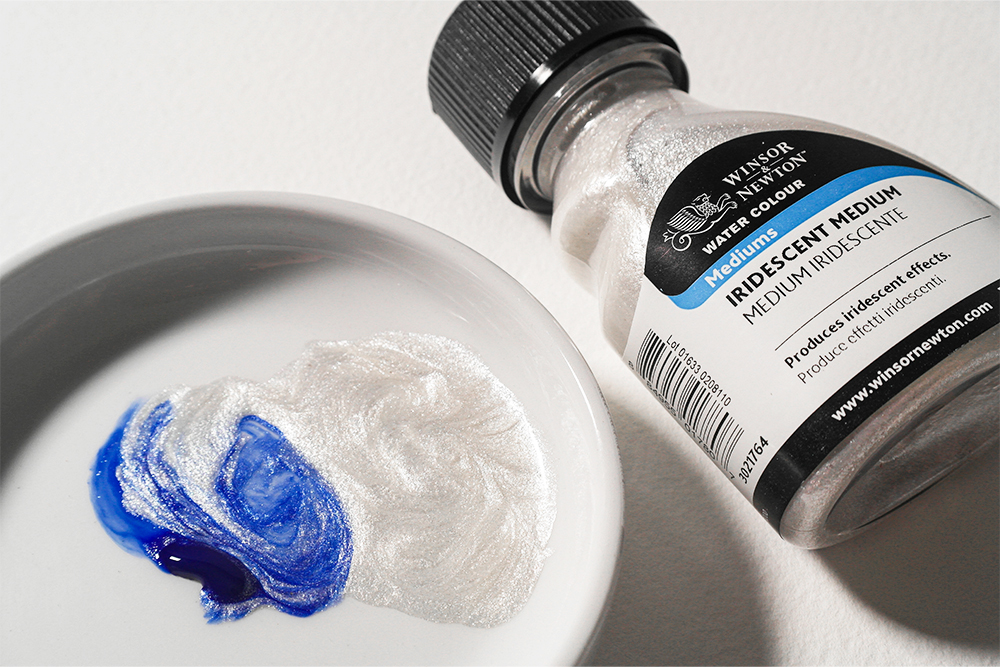
Iridescent Medium is a fluid medium that adds a gentle pearlescent, sparkle to your watercolour paints. The fluid includes soft, reflective grains and gives the strongest iridescence when mixed with transparent paints. Mix it straight in with your paints to immediately create a pearlescent version of your favourite colours. You can also use it alone as a glaze over washes to give them a gentle iridescent glow. It creates particularly dramatic effects in washes of colour on dark or black watercolour paper.
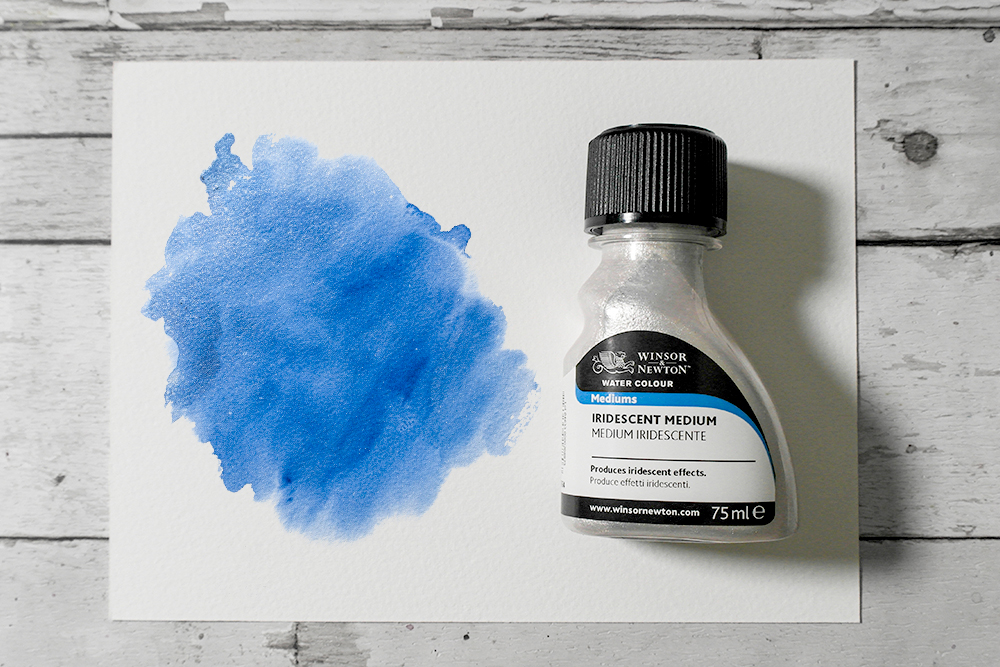
Lifting Preparation
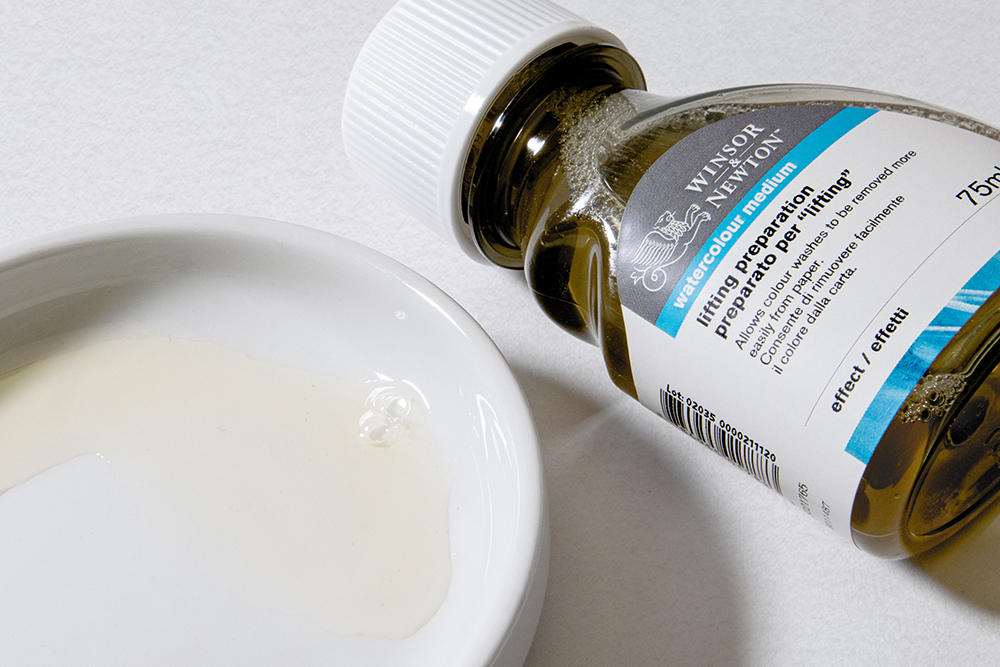
Lifting Preparation allows you to easily lift both staining and non-staining colours from your watercolour paper. It’s also particularly useful for using on heavy washes or on very absorbent grounds. You apply the medium to your paper prior to painting, and should allow it to dry thoroughly. Essentially, it holds the watercolour paint on the surface of the paper and prevents it from sinking into the paper. Once you’ve applied the medium you can lift colour in the usual way. Simply work a wet brush or damp sponge into the area and gently work out the paint. The level of lifting possible does decrease the longer you leave the medium on the paper. For best results, lift colour within 5 to 6 hours of application.
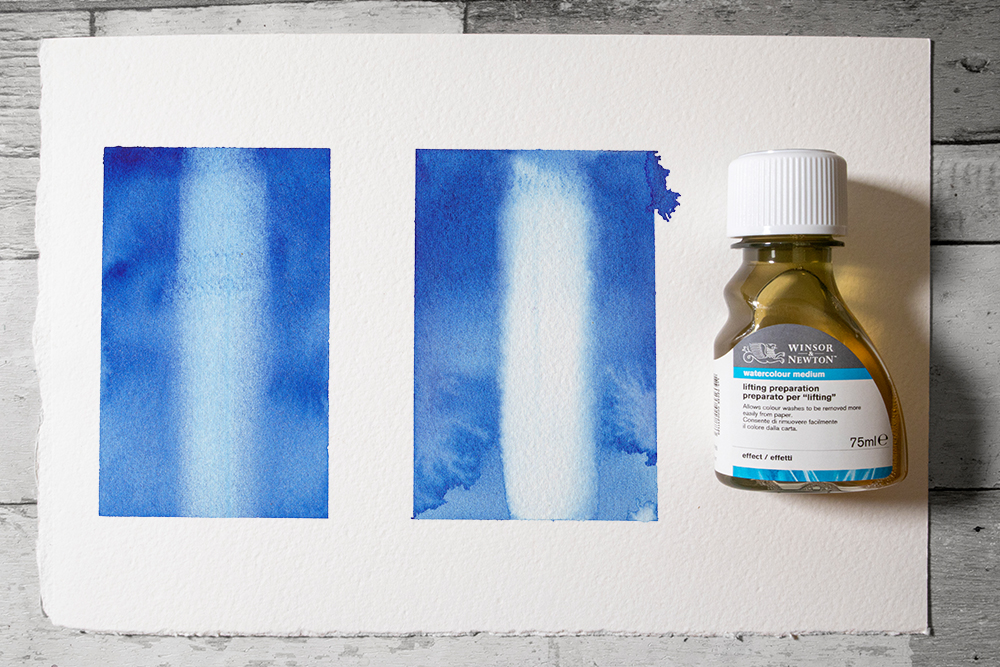
Masking Fluid
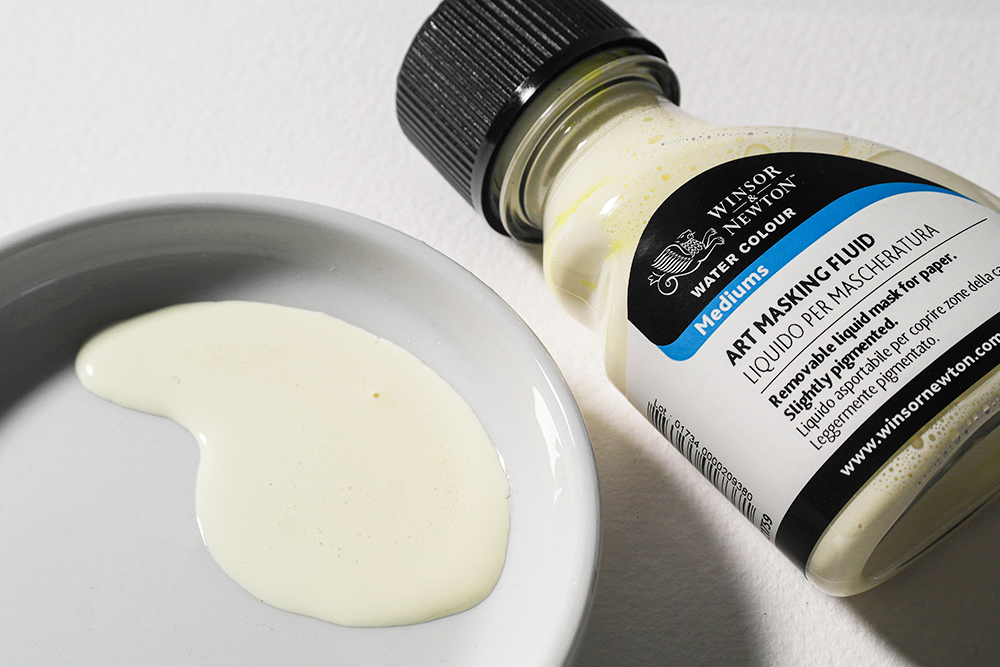
Masking Fluid is a removable medium that will protect areas of your painting from washes of colour. It’s most common use is to retain the white of the paper for highlights. You can also use it to mask out areas you don’t want to be painted when you are creating large washes, for example skies and seas. You can apply it with a brush, a rubber applicator or ruling pen. Some masking fluids come with their own applicators and nozzles. It is best to apply it thinly on dry paper, and should be thoroughly dry before you paint over the top of it.
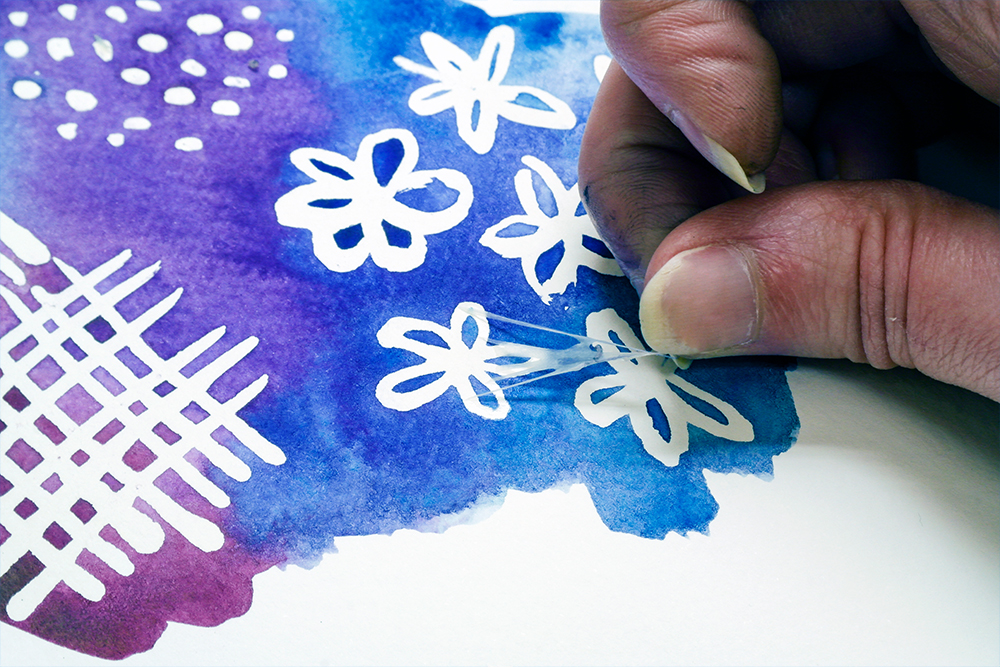
Make sure you clean any applicators thoroughly after use. Masking Fluid is particularly stubborn to remove – so we’d recommend avoiding using your best brushes with it! Zest-It Masking Fluid Remover is particularly effective for cleaning tools clogged with masking fluid.
We’d always recommend removing Masking Fluid from your painting at the earliest opportunity. If you leave it to sit too long on your paper it can be difficult to remove and you’ll risk ruining your painting. It’s best to be patient and gentle when removing Masking Fluid. Too much pulling or rubbing will cause your paper to tear. We’d advise carefully rubbing the edge of the fluid then gently pulling the film upwards to lift it away from the paper. Make sure you have clean hands while doing this, finger oils and general dirt can damage your painting. Alternatively, you could use a Maskaway Making Fluid Remover Block.
We also stock two variations on traditional masking fluid:
Permanent Masking Medium
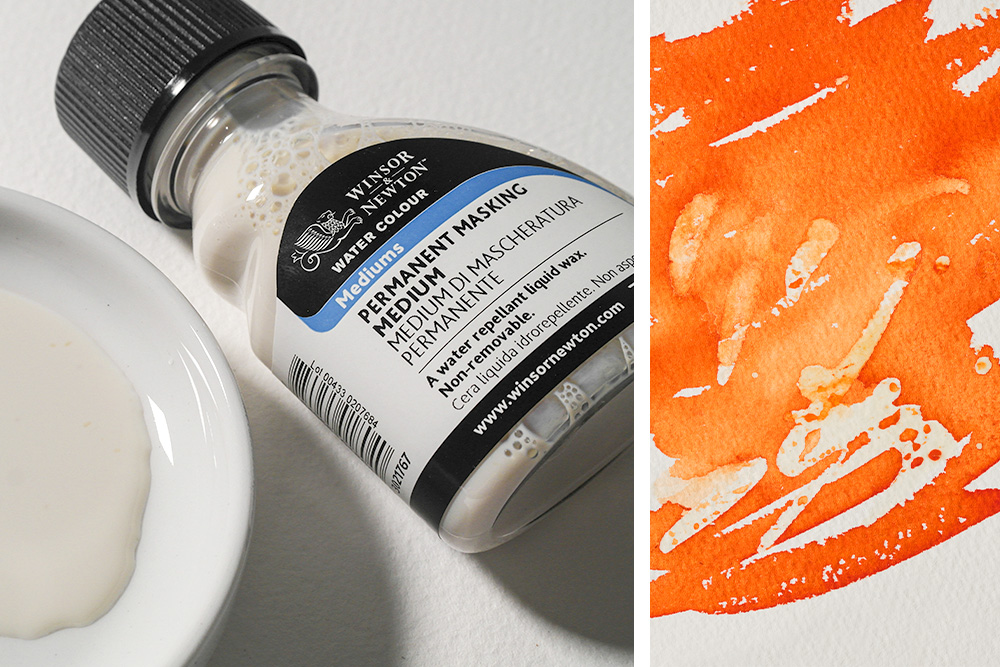
Permanent Masking Medium is a non-removable, liquid wax treatment you can apply to induce water resistance. Use it neat on paper to mask out areas where you want to retain the whiteness of the surface. You can also mix this fluid with colour. You’ll be able to work with the colour for as long as it is wet. Once it’s dry it will repel any paint you apply over the top of it. This medium is useful for retaining fine detail or for creating expressive finishes.
Colourless Masking Medium
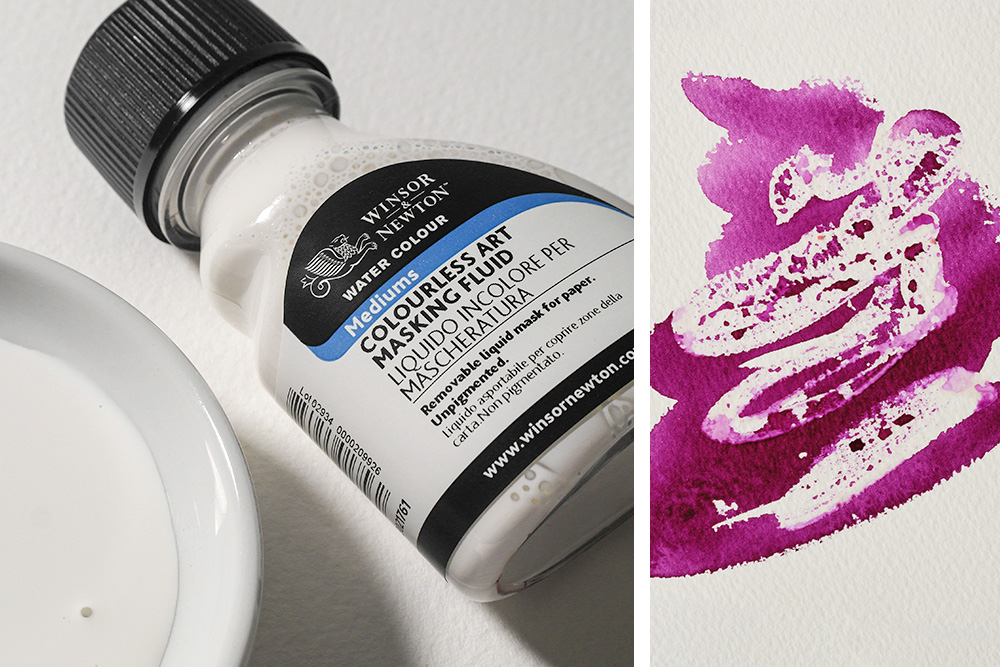
Colourless Masking Medium is essentially the same as regular Masking Fluid, but without the addition of pigment. Regular Masking Fluids usually tinted with either yellow or blue pigment, which can sometimes cause discolouration on certain surfaces. Colourless Masking Medium is suitable for sensitive papers where this type of staining may be a concern.
Ox Gall
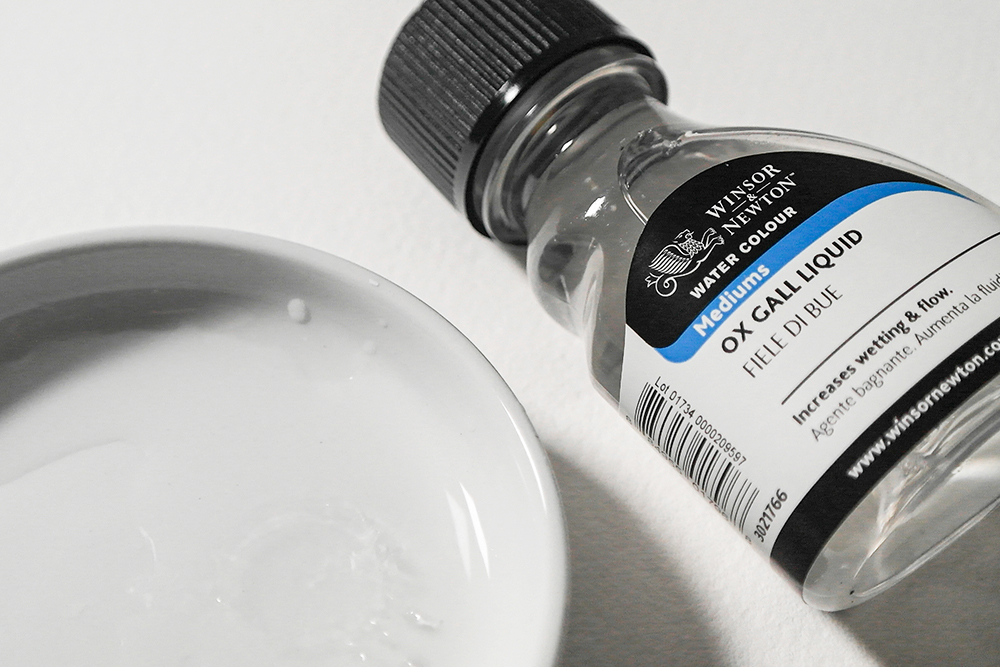
Ox Gall is an additive that acts as a wetting agent to improve flow. Some brands do include it as an ingredient in their paint formulas for this purpose. You add this fluid to your water, rather than directly into the paint you are working with. You should use around three to four drops per cup of water. Use the solution to dilute colour and you’ll notice that it’s much easier to create smooth gradations of colour as the paint flows easily across your paper. It’s great to use on hard sized papers as it reduces the surface tension and allows your paint to flow better. Ox Gall is derived from animal products.
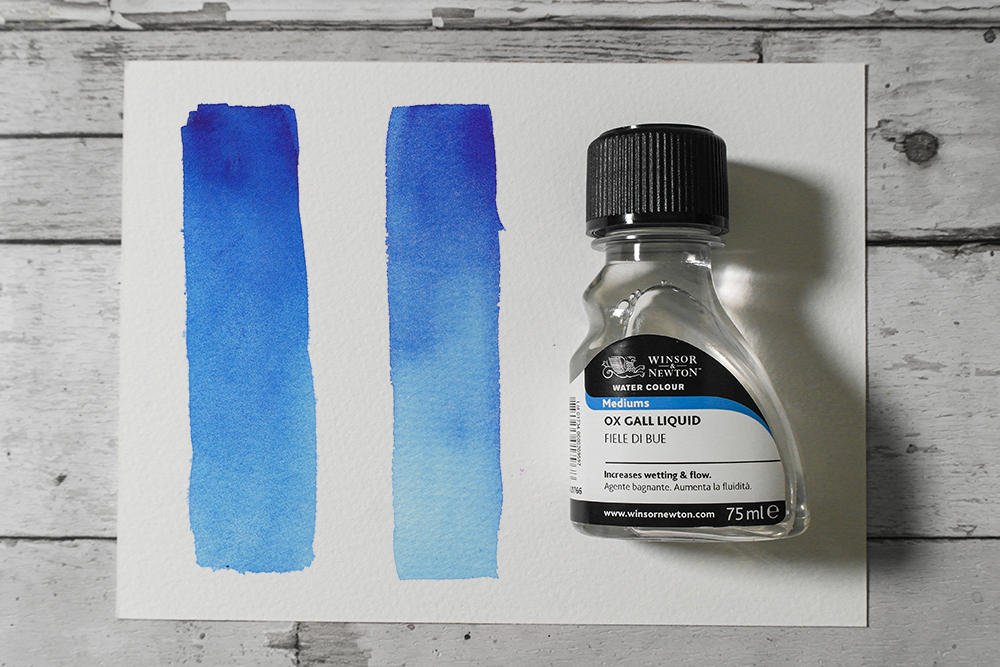
You can also use Ox Gall on the surface of your palette to prevent colour from beading. Just add a few strokes of Ox Gall to the surface, allow to dry and your paint should bead much less.
Texture Medium
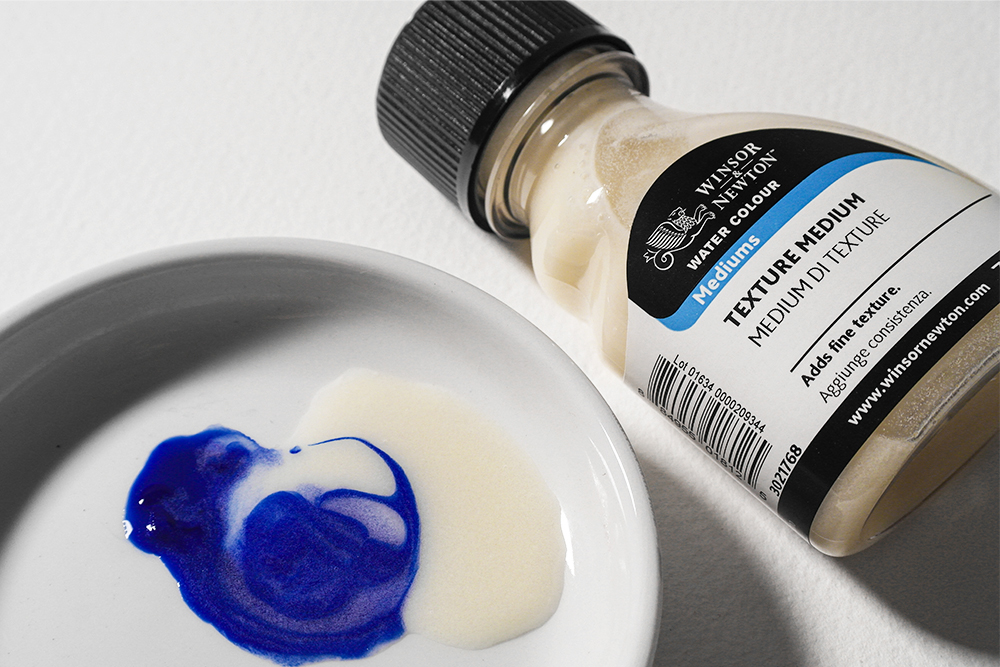
Texture Medium is a fluid that includes small particles to create a delicate texture. You can apply this medium directly to paper then paint over it, or mix directly into colour. It gives the dry wash a texture similar to fine grit sandpaper. It’s a great medium to use if you’re looking to create an impression of depth or structure to your paintings.
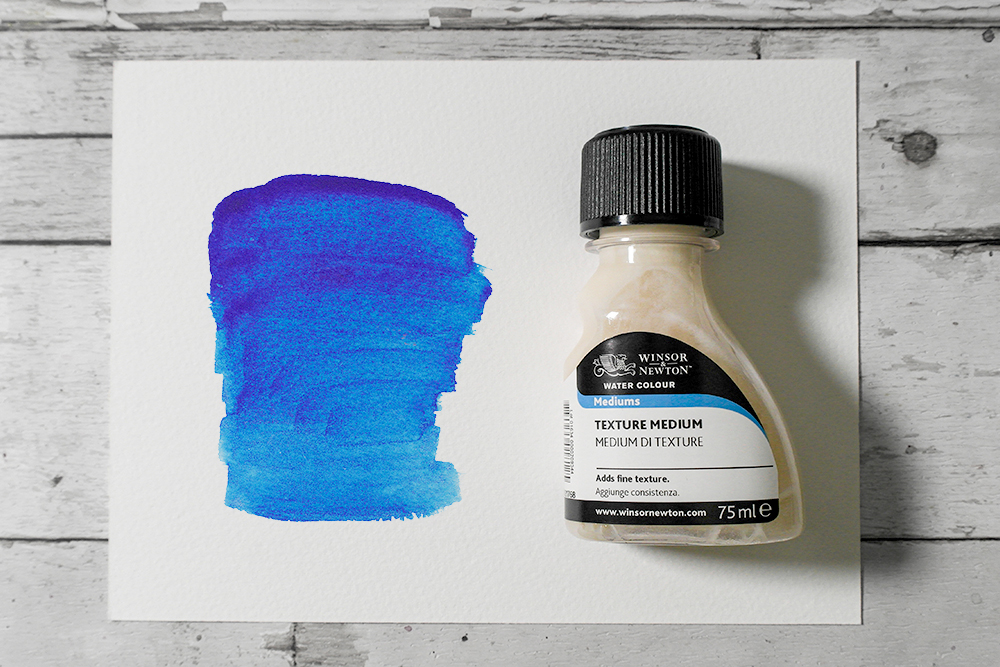
Watercolour Grounds & Other Useful Watercolour Sundries
While some of these products aren’t strictly painting mediums and aren’t used solely for watercolour painting, they can be great to add to your arsenal if you’re looking to diversify your techniques or explore new painting methods.
Watercolour Grounds
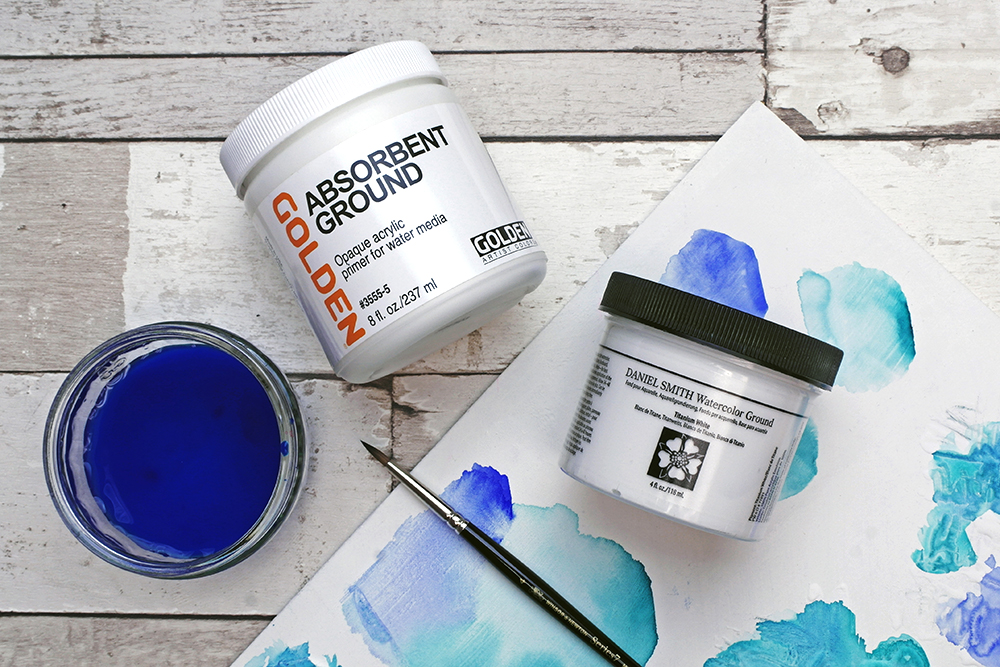
Watercolour Grounds are acrylic based primers that you can apply to virtually any surface to make them accept watercolour paint. You use them as you would Gesso – just paint a few layers onto your chosen surface, leave to dry and they’ll be ready to paint on. They’re fantastic if you’re looking to break free from the tradition of painting on paper. Try watercolour grounds out on all kinds of surfaces including wood, metal and even glass.
Bleedproof White
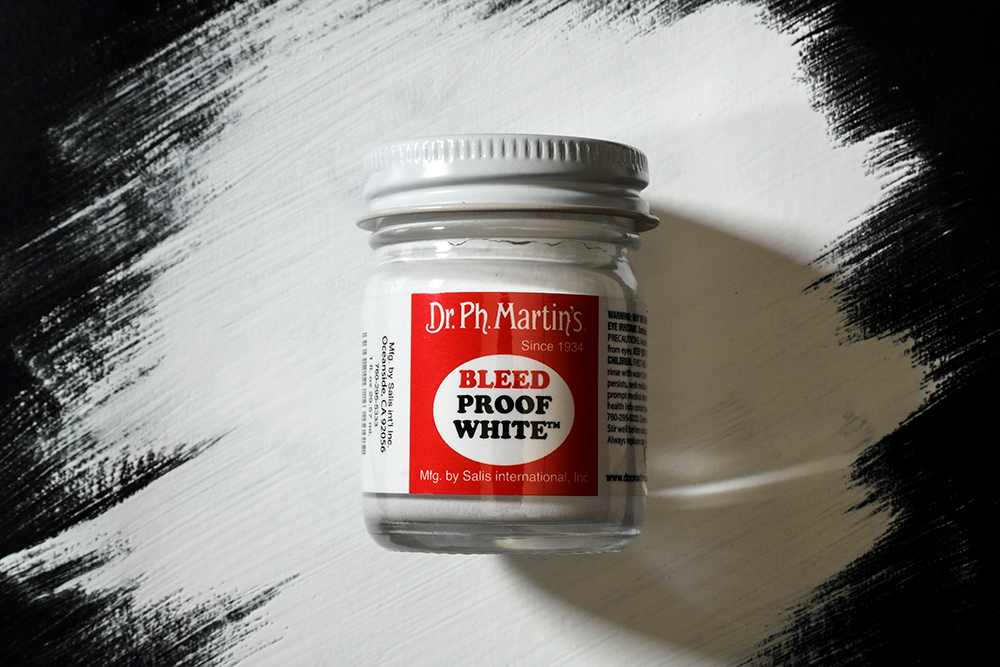
Bleedproof White is a thick, opaque, water-based paint. It’s perfect for adding in highlights or bringing white back into areas of your painting. You can apply it straight from the bottle or thin with water as required. As the name suggests, this paint is completely bleedproof – so you won’t find any colour leaching from the paint layers below and there’ll be no discolouration over time. You could use Permanent White Gouache Paint or white Gel Pens as an alternative. Some artists choose to use acrylic paint or paint markers instead, but these tend to have a slightly glossy finish.
Brushable Wax Resist & Wax Resist Sticks
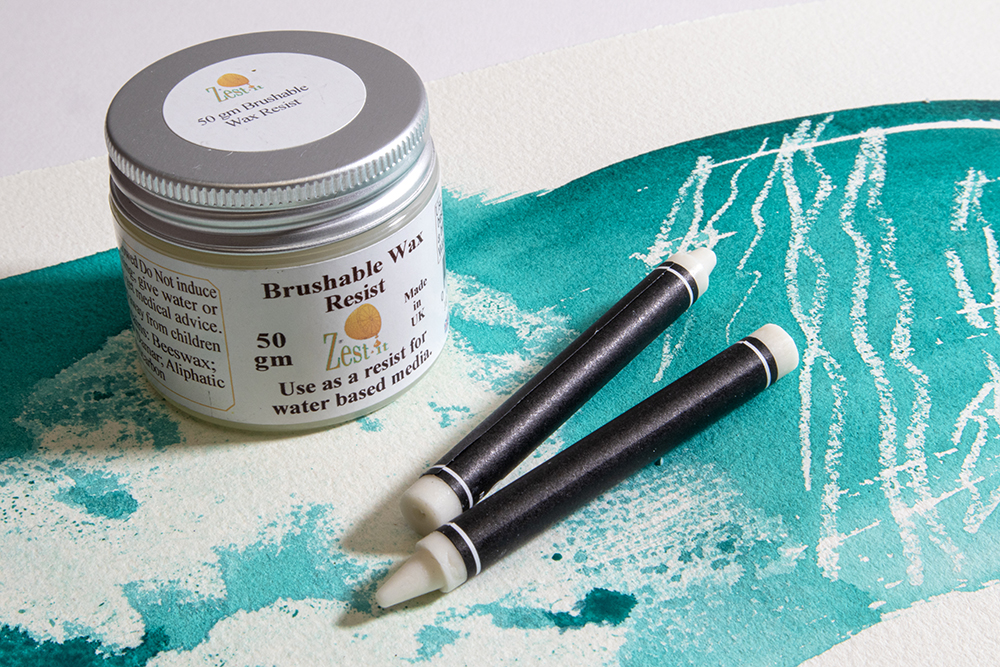
Wax Resist techniques involve applying a layer of wax to your paper to repel watercolour paint. You can paint Zest-it Brushable Wax Resist on with a brush, or apply Wax Resist Sticks like you would a crayon or pastel. You could even use coloured oil pastels or wax pastels for a similar technique. Once you apply wax you can’t remove it, so be sure to experiment with the technique a little to make sure that it’s right for you.
Varnishes
Traditionally watercolour paintings have been framed behind glass, so didn’t require varnishing. However, the medium has now broken free from its ‘framed-behind-glass’ niche, and more artists are choosing to varnish their pieces. There are a few options available. Daler-Rowney Poster Varnish is great for artists looking for a ‘brush on’ varnish, while both Golden Archival Varnish and Schmincke Universal Fixative offer an aerosol alternative. You can also add Cold Wax Medium as a varnish by buffing in small circles using a soft cloth. Varnishing a watercolour painting is an irreversible process, and can alter the saturation and appearance of your work. It’s always advisable to test varnishes on a small, inconspicuous area to see if you like the finish.
Let your creativity run wild with Watercolour Mediums
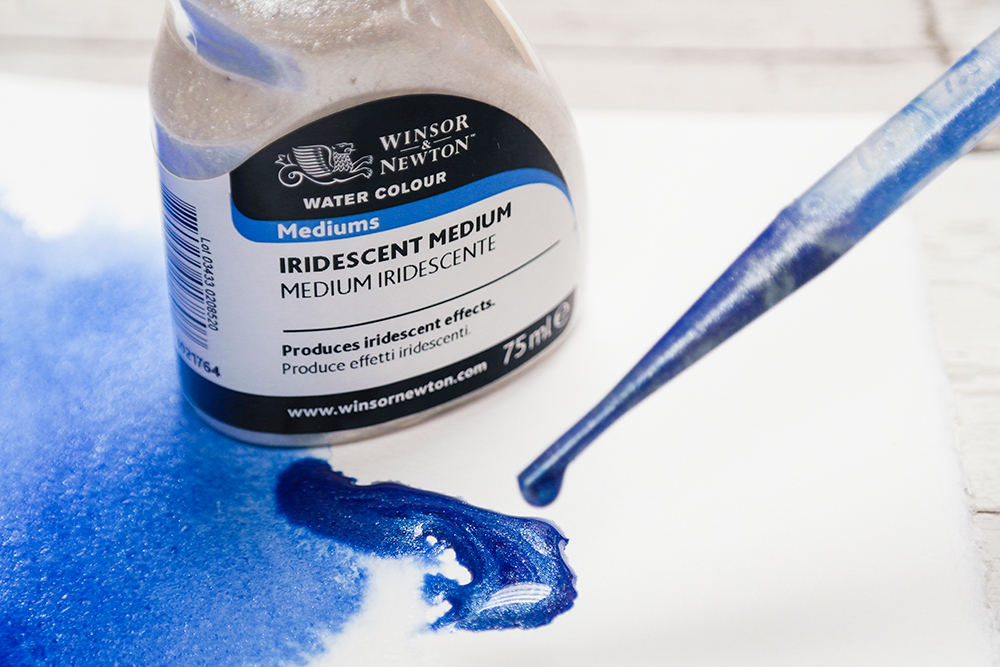
It’s well worth experimenting with watercolour mediums to push your creative limits. They open up a whole new world of techniques to try. Try mixing and matching them to create your own custom painting methods, and discover which work best with your practice. Try combining mediums with some of the techniques explored in our 15 Watercolour Painting Techniques blog post to push your watercolour skills to the next level.
You can browse our full range of Watercolour Painting Mediums by clicking the underlined link.
Want to know more about Watercolour Painting?
Check out some of our other watercolour painting guides:



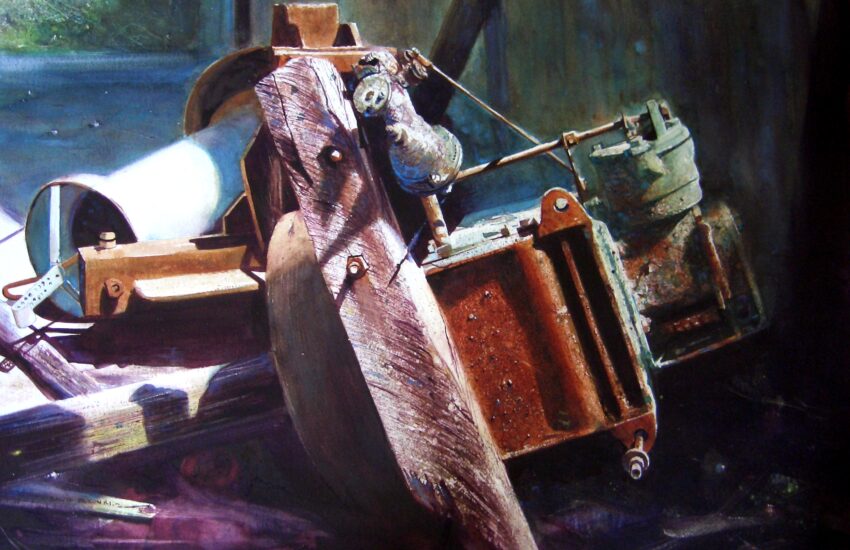
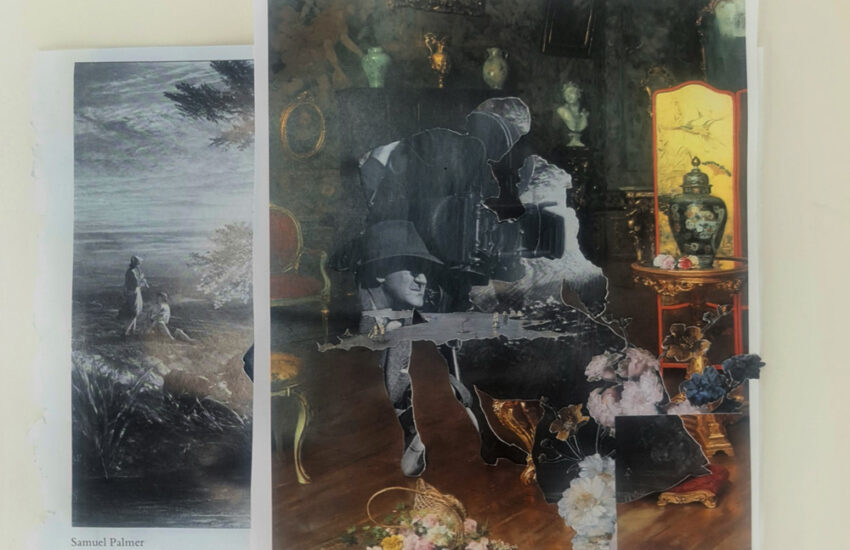
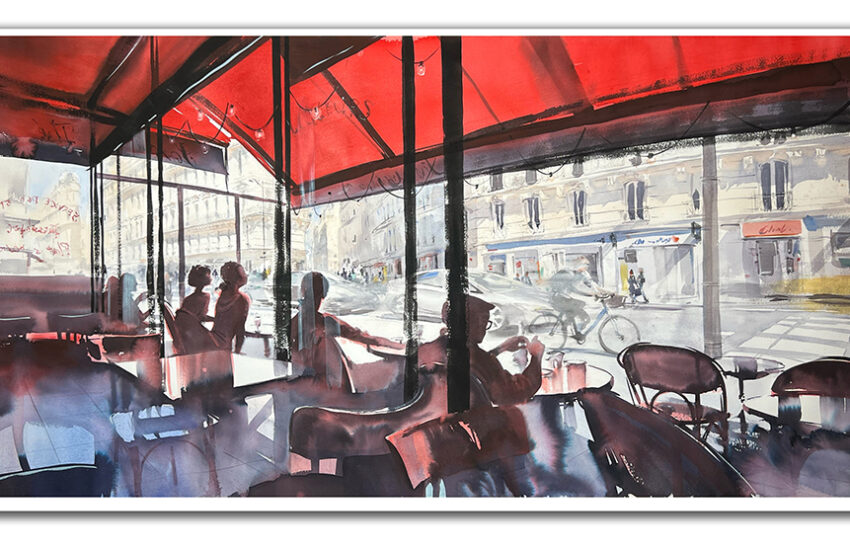


This was wonderful information! Some of these mediums I have never heard of before…and now I want to try them! Thank you!
Happy to hear you liked the post Irene! Hope you enjoy exploring the world of watercolour mediums!
A very useful article tank you
Glad to hear you found the article useful Geri!